These days, everyone has a regained respect for stock market volatility. One way to maintain a more stable income in retirement is to take part of your nest egg and buy a single-premium immediate annuity (SPIA). With an SPIA, you pay a lump-sum upfront to an insurance company in exchange for a guaranteed stream of income payments for life. You’ll usually get a much higher income than from bonds or dividend-paying stocks. However, once you die, the payments stop and your upfront payment is gone.
How much income can you get?
The two main factors that affect your actual payout are your age and the current interest rate environment, but there are also additional options to consider. Here are a few of the biggies:
- Single vs. joint life. Will the payments be guaranteed for only one life, or the longer of two lives? This is a popular option for couples living together.
- Minimum guaranteed payout period. Some folks may hate the idea of losing your entire lump-sum in the event of an early death, or want a minimum payout amount. With this option, you can guarantee that payments will be made for a specific minimum period (i.e. 5 or 10 years) no matter what.
- Inflation-adjusted payments. With this option, your monthly payments will increase or decrease by a certain percentage each year, as pegged to inflation. This will protect you from decreased purchasing power in the future due to inflation, but will significantly decrease your initial payout.
Below, the July issue of Money magazine included a nice graphic that helps show how each affect your possible payouts based on a $250,000 investment. Data is from ImmediateAnnuities.com, a handy site to get free quotes.
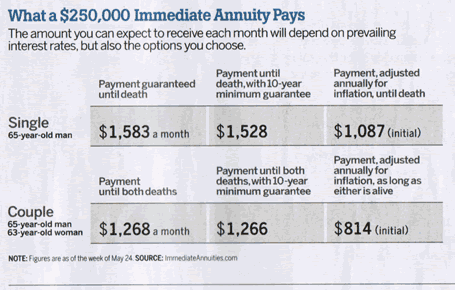
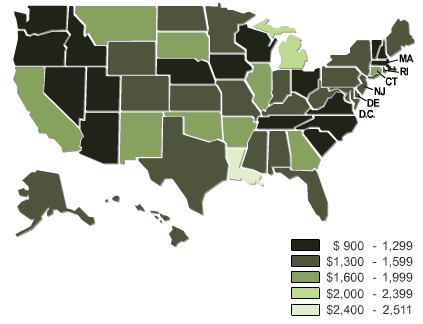
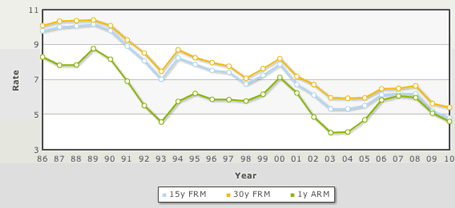
 We all have financial goals that we want to reach. Some of us do better with a reward attached to reaching our goal (carrot), while others may actually try harder if trying to avoid a punishment (stick). We are motivated by personal desire, by our family, by our friends… but how about a website?
We all have financial goals that we want to reach. Some of us do better with a reward attached to reaching our goal (carrot), while others may actually try harder if trying to avoid a punishment (stick). We are motivated by personal desire, by our family, by our friends… but how about a website? 
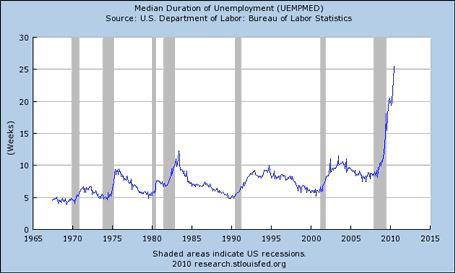
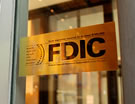 The standard maximum insurance limits for both FDIC and NCUA-insured accounts have been permanently raised to $250,000 per depositor as part of the Dodd-Frank Wall Street Reform and Consumer Protection Act, signed July 21st, 2010. The limits were temporarily increased from $100,000 to $250,000 effective October 3, 2008, through December 31, 2010. On May 20, 2009, the temporary increase was extended again through December 31, 2013. (
The standard maximum insurance limits for both FDIC and NCUA-insured accounts have been permanently raised to $250,000 per depositor as part of the Dodd-Frank Wall Street Reform and Consumer Protection Act, signed July 21st, 2010. The limits were temporarily increased from $100,000 to $250,000 effective October 3, 2008, through December 31, 2010. On May 20, 2009, the temporary increase was extended again through December 31, 2013. (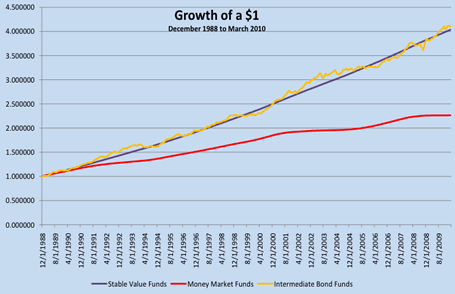
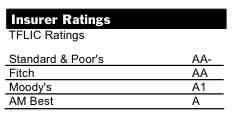

 Sometimes saving money just involves being lucky. I don’t really keep up with mortgage rates anymore, but last week an e-mail subject line just happened to catch my eye that mortgage rates are at “record lows”. I always figured that my 5.125% rate was so low that another refinance or loan modification probably would never be worth it, but it turns out that rates are so low they just might. Here’s a quick snapshot of rates from a
Sometimes saving money just involves being lucky. I don’t really keep up with mortgage rates anymore, but last week an e-mail subject line just happened to catch my eye that mortgage rates are at “record lows”. I always figured that my 5.125% rate was so low that another refinance or loan modification probably would never be worth it, but it turns out that rates are so low they just might. Here’s a quick snapshot of rates from a 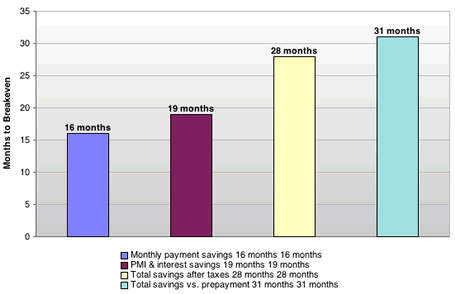
 The Best Credit Card Bonus Offers – March 2024
The Best Credit Card Bonus Offers – March 2024 Big List of Free Stocks from Brokerage Apps
Big List of Free Stocks from Brokerage Apps Best Interest Rates on Cash - March 2024
Best Interest Rates on Cash - March 2024 Free Credit Scores x 3 + Free Credit Monitoring
Free Credit Scores x 3 + Free Credit Monitoring Best No Fee 0% APR Balance Transfer Offers
Best No Fee 0% APR Balance Transfer Offers Little-Known Cellular Data Plans That Can Save Big Money
Little-Known Cellular Data Plans That Can Save Big Money How To Haggle Your Cable or Direct TV Bill
How To Haggle Your Cable or Direct TV Bill Big List of Free Consumer Data Reports (Credit, Rent, Work)
Big List of Free Consumer Data Reports (Credit, Rent, Work)